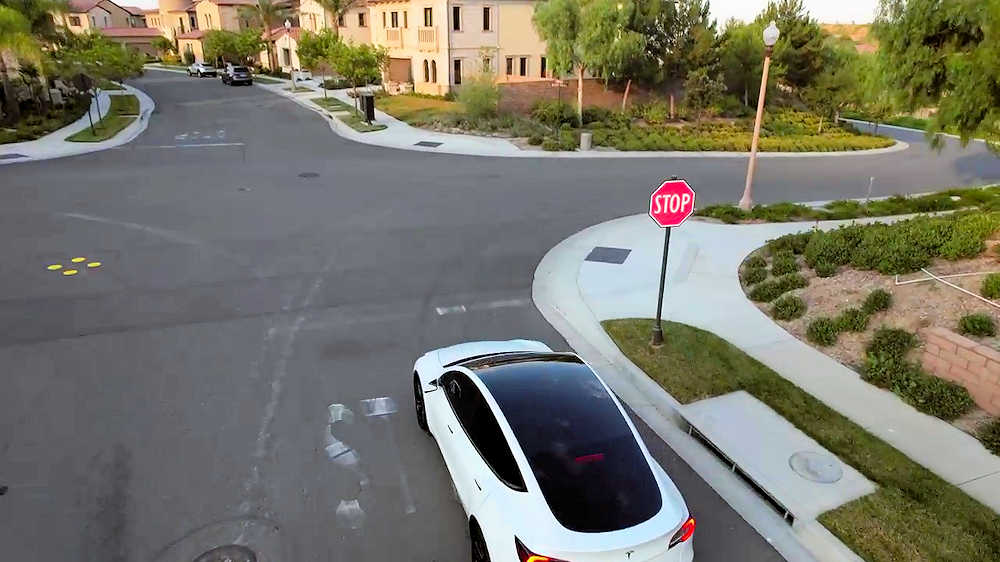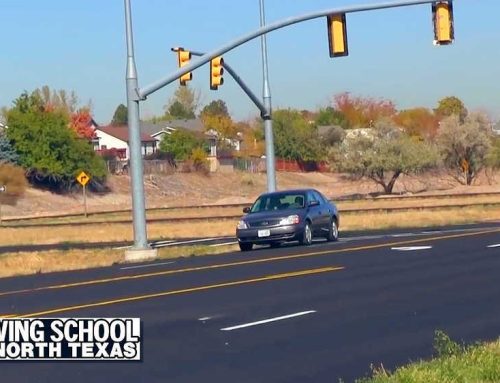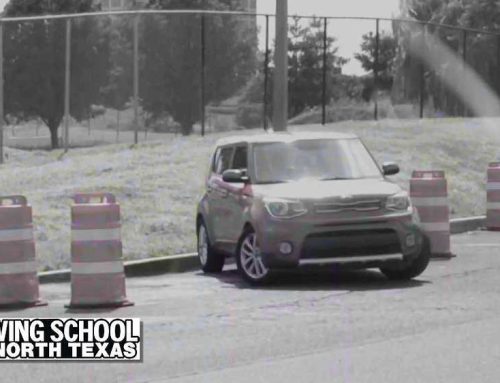The Importance of Defensive Driving Techniques
Table of contents
- Understanding Defensive Driving
- The Role of Focus in Defensive Driving
- Key Defensive Driving Techniques
- Always Be Prepared
- Stay Focused on Your Driving and the Road
- Always Keep an Eye on Your Surroundings
- Predicting and Responding to Risks
- Maintaining Safe Distance from Other Vehicles
- Adjusting to Weather Conditions
- Driving Safely in Rain and Snow
- Why is it important to practice defensive driving techniques in rain and snow?
- What is the role of focus in defensive driving?
- How can I maintain focus while driving in rain and snow?
- What are some key defensive driving techniques to practice in rain and snow?
- How can I prepare my vehicle for driving in rain and snow?
- How can I predict and respond to risks while driving in rain and snow?
- What is a safe following distance in rain and snow?

Defensive driving techniques play a crucial role in ensuring the safety of drivers, passengers, and pedestrians on the road. These skills not only help to prevent accidents but also reduce the severity of injuries that can occur during collisions. By practicing defensive driving, individuals are better equipped to anticipate potential hazards and react appropriately when faced with unexpected situations.
One key aspect of defensive driving is maintaining focus while behind the wheel. This involves minimizing distractions such as cell phones or other electronic devices and paying close attention to traffic signals, road signs, and the actions of other drivers. Developing strong concentration skills enables motorists to make informed decisions about their speed, lane position, and following distance based on current conditions.
Another important element of defensive driving is mastering various techniques that can be employed in different scenarios. For example, learning how to safely merge onto highways or navigate intersections requires an understanding of proper signaling methods and right-of-way rules. Additionally, knowing how to maintain a safe following distance from other vehicles allows for adequate reaction time should sudden braking or maneuvering become necessary. By honing these essential skills through practice and experience, drivers can significantly decrease their likelihood of being involved in an accident while simultaneously increasing overall roadway safety for everyone involved.
Understanding Defensive Driving

Defensive driving is a set of skills and practices aimed at reducing the risk of accidents by anticipating potential hazards and adjusting one’s driving behavior accordingly. It goes beyond simply following traffic rules and regulations, as it requires drivers to be proactive in ensuring their own safety as well as that of other road users. Road safety can be significantly improved when motorists are equipped with defensive driving techniques, which help them react more effectively to unexpected situations such as sudden stops or changes in road conditions.
One crucial aspect of defensive driving is vehicle maintenance, which ensures that your car remains safe and reliable on the road. Regularly checking tire pressure, oil levels, brakes, lights, wipers, and other essential components helps prevent breakdowns or malfunctions while you’re behind the wheel. A well-maintained vehicle not only reduces the likelihood of accidents but also contributes to a smoother ride with better fuel efficiency.
Another important element in understanding defensive driving is being aware of various factors affecting road conditions. These may include weather-related challenges like rain or snow; obstacles such as potholes or debris; construction zones; heavy traffic congestion; or even unpredictable actions from pedestrians or other drivers. By staying alert to these potential hazards and adjusting your speed and distance accordingly – for example slowing down during rainy weather – you can minimize risks associated with changing circumstances on the roads around you without compromising overall travel time effectiveness.
The Role of Focus in Defensive Driving

One crucial aspect of defensive driving is maintaining focus and concentration at all times. This means constantly scanning the road ahead, checking mirrors frequently, and being aware of potential hazards before they become dangerous situations. By staying focused on their surroundings, drivers can make necessary adjustments to their speed or position in response to changes in traffic patterns or weather conditions. In addition to these Weather Adjustments, it’s essential for drivers to remain vigilant about potential risks that may not be immediately apparent, such as vehicles in their blind spot.
Keeping a Safe Distance from other vehicles on the road is another critical component of focusing while practicing defensive driving techniques. Drivers must continually assess the distance between themselves and other cars around them to ensure adequate reaction time if an unexpected event occurs. For example, if a vehicle suddenly brakes or swerves into your lane without warning, having enough space will allow you sufficient time to react appropriately and avoid a collision.
Additionally, remaining alert allows drivers to anticipate possible threats by observing the behavior of others on the road. This heightened awareness enables proactive decision-making when faced with potentially hazardous situations like aggressive drivers or sudden changes in traffic flow. It’s essential for motorists always to be prepared for any scenario that may arise while behind the wheel by maintaining focus throughout their entire journey – this includes regularly checking mirrors for blind spots and adjusting following distances according to current conditions (e.g., rain or snow).
Key Defensive Driving Techniques

One essential technique for defensive driving is to be aware of tailgaters and how to handle them safely. Tailgaters are drivers who follow too closely behind your vehicle, which can create a dangerous situation if you need to brake suddenly. To deal with tailgaters, avoid slamming on your brakes or making sudden lane changes as this may lead to an accident. Instead, gradually slow down and allow the tailgater to pass you when it’s safe or change lanes if possible.
Another crucial aspect of defensive driving is ensuring that your headlights and tires are in good condition. Properly functioning headlights not only help you see better in low light conditions but also make your vehicle more visible to other drivers on the road. Regularly inspecting your headlights for any issues such as dimming lights or broken bulbs is vital for maintaining visibility during nighttime driving or adverse weather conditions like rain and fog. Similarly, well-maintained tires provide better traction on various road surfaces, reducing the risk of skidding or losing control of the vehicle.
| BOOK YOUR DRIVING CLASS TODAY! |
| Driving School of North Texas |
Defensive driving techniques also involve anticipating potential risks on the road and responding accordingly. For example, if you notice a driver ahead swerving between lanes, maintain a safe distance from their vehicle while staying alert for any unexpected movements they might make. Additionally, be cautious around large trucks that have limited visibility and require more space for maneuvering; give them ample room when passing or merging into traffic near them so that both vehicles can operate safely together on the roadway without incident.
- Be aware of tailgaters:
- Avoid slamming on your brakes or making sudden lane changes
- Gradually slow down and allow the tailgater to pass when safe
- Change lanes if possible
- Maintain proper headlights and tires:
- Regularly inspect headlights for dimming lights or broken bulbs
- Ensure tires are well-maintained for better traction on various road surfaces
- Anticipate potential risks on the road:
- Stay alert for unexpected movements from other drivers, such as swerving between lanes
- Maintain a safe distance from vehicles displaying erratic behavior
• Exercise caution around large trucks:
◦ Give ample room when passing or merging into traffic near them
◦ Be mindful of their limited visibility and need for more space to maneuver
• Practice patience in heavy traffic situations:
◦ Resist the urge to weave through congested areas recklessly
◧ Focus on maintaining a steady pace while leaving enough space between you and other vehicles
• Remain vigilant at intersections:
○ Always come to a complete stop at stop signs, even if it appears clear
○ Look both ways before proceeding through an intersection, especially when turning left against oncoming traffic
• Use turn signals consistently:
○ Signal well before making any turns or changing lanes so that other drivers have time to react accordingly
• Keep up with regular vehicle maintenance:
▪︎ Check fluid levels regularly (oil, coolant, brake fluid)
▪︎ Routinely inspect brakes, suspension components, and steering systems
By practicing these key defensive driving techniques consistently, you can significantly reduce your risk of being involved in an accident. Making safety a priority not only protects you but also helps ensure the wellbeing of others sharing the road.
Always Be Prepared

One of the key aspects of defensive driving is preparedness. Being prepared means anticipating potential hazards and having a plan in place to deal with them effectively. This includes ensuring your vehicle is well-maintained, regularly checking your tire pressure and fluid levels, keeping an emergency kit in your car, and always wearing a seatbelt. Preparedness also extends to being mentally ready for any situation that may arise while on the road.
Distractions can be particularly dangerous when it comes to driving defensively. To maintain optimal awareness of your surroundings, it’s essential to minimize distractions inside the vehicle as much as possible. This might include turning off or silencing electronic devices like cell phones, setting up GPS navigation before starting your journey, avoiding eating or drinking behind the wheel, and asking passengers to keep noise levels down so you can focus on what’s happening around you.
In addition to minimizing distractions within the vehicle itself, drivers should also practice active awareness by scanning their surroundings continuously for potential risks. This involves regularly checking rear-view mirrors and blind spots while maintaining attention on traffic patterns ahead of you. By staying vigilant about observing other vehicles’ movements and gauging their intentions early on – such as noticing if they’re signaling a turn or changing lanes – you’ll be better equipped to react quickly if needed in order to avoid collisions or other adverse situations on the road.
Stay Focused on Your Driving and the Road

One of the crucial aspects of defensive driving is maintaining focus on your driving and the road. This involves constantly assessing your vehicle’s position, speed, and direction while also being aware of other vehicles, pedestrians, and potential hazards. Risk prediction plays a significant role in staying focused as it enables drivers to anticipate possible issues that may arise on the road. By accurately predicting risks, you can make informed decisions about how to react in various situations.
Speed control is another essential component of staying focused on your driving and the road. Maintaining an appropriate speed not only helps prevent accidents but also gives you more time to react if something unexpected occurs. It is important to adjust your speed according to traffic conditions, posted speed limits, weather conditions, and visibility levels. Additionally, proper vehicle control contributes significantly to safe driving practices by ensuring that you maintain stability and maneuverability at all times.
Developing good habits such as checking mirrors regularly for any changes in traffic patterns or potential hazards will help keep you alert while behind the wheel. Furthermore, minimizing distractions such as mobile phones or loud music can greatly improve concentration levels during driving sessions. By incorporating these strategies into daily routines along with risk prediction techniques like scanning ahead for potential obstacles or adjusting speeds based on upcoming curves or intersections will result in safer roads for everyone involved.
Always Keep an Eye on Your Surroundings

One of the fundamental aspects of defensive driving is to always be prepared for any situation that may arise while on the road. This involves not only staying focused on your driving but also keeping a keen eye on your surroundings. Being aware of what’s happening around you enables you to anticipate potential hazards and make quick decisions in response, ultimately reducing the chances of an accident.
To effectively keep an eye on your surroundings, it’s essential to develop and maintain good scanning habits. Regularly check all mirrors, including rearview and side mirrors, as well as looking ahead at the road and periodically glancing at other areas such as intersections or pedestrian crossings. By doing so, you’ll be able to spot changes in traffic patterns or unexpected obstacles early enough to react appropriately. Additionally, maintaining proper lane positioning can greatly improve visibility and give you more time to respond if needed.
Apart from visual awareness, another crucial aspect is being mindful of potential blind spots caused by large vehicles or obstructions along the roadway. In these cases, adjusting your position slightly can provide a clearer view and help avoid dangerous situations before they escalate into accidents. Also remember that even with advanced technology like rearview cameras or sensors available in some cars today; nothing beats using your own senses combined with experience when it comes to ensuring safety behind the wheel – always stay focused on your driving while remaining vigilant about what’s happening around you.
Predicting and Responding to Risks

One of the most important aspects of defensive driving is the ability to predict a possible risk before it becomes an immediate threat. This involves constantly scanning the road ahead, as well as paying close attention to other drivers’ behaviors and actions. By anticipating potential hazards, you can take proactive measures to avoid them or minimize their impact on your safety.
To stay safely distant from vehicles around you, always maintain a safe following distance behind the vehicle in front of you. This will give you enough time and space to react if they suddenly stop or change direction. Additionally, be aware of other vehicles’ blind spots – areas where they may not see your car due to obstructions like side mirrors or window pillars. Don’t drive in the blind spot for too long; either speed up or slow down so that other drivers can easily see your vehicle.
| BOOK YOUR DRIVING CLASS TODAY! |
| Driving School of North Texas |
Another crucial element in predicting and responding to risks is being able to quickly adapt your driving style based on changing road conditions and traffic patterns. For example, if there’s heavy congestion ahead, reduce your speed accordingly and be prepared for sudden stops by keeping a safe distance between yourself and other cars around you. Similarly, when approaching intersections or merging onto highways, pay special attention to any signs indicating upcoming changes in traffic flow so that you can adjust your position on the road accordingly while maintaining proper spacing with surrounding vehicles.
Maintaining Safe Distance from Other Vehicles
One essential defensive driving technique is to always maintain a safe distance from other vehicles on the road. This can be especially crucial during adverse weather conditions, such as rain or snow when visibility and traction are reduced. To adjust for rain, it’s important to increase your following distance to allow more time for reaction in case of sudden stops or changes in traffic flow. Similarly, preparing for snowy weather requires drivers to leave extra space between their vehicle and others on the road.
Another key aspect of maintaining a safe distance is using headlights wisely. Headlights should always be turned on when visibility is low, regardless of whether it’s daytime or nighttime. Proper use of headlights not only helps you see better but also allows other drivers to notice your presence sooner. Additionally, avoid using high beams when following closely behind another vehicle, as this can cause glare and impair the vision of the driver ahead.
In addition to adjusting your following distance based on weather conditions and using headlights effectively, it’s crucial that drivers remain vigilant about their surroundings at all times. Constantly scan the road ahead for potential hazards like stopped cars or debris in the roadway while also keeping an eye on mirrors for approaching vehicles from behind or beside you. By staying aware and anticipating possible risks before they occur, you’ll be better prepared to react quickly if needed – ultimately contributing to safer driving practices overall.
Adjusting to Weather Conditions

Adjusting to weather conditions is a crucial aspect of defensive driving, as it can significantly impact road safety. Different weather conditions require different adjustments to ensure that you maintain control over your vehicle and minimize the risk of accidents. For instance, wet or icy roads may necessitate slower speeds and increased following distances, while foggy conditions call for the use of low beam headlights and extra caution when approaching intersections.
One important step in preparing for various weather conditions is to inflate your tires appropriately. Proper tire inflation not only improves fuel efficiency but also enhances traction on slippery surfaces such as wet or snowy roads. Moreover, regularly checking and maintaining proper tire pressure helps reduce the likelihood of sudden blowouts or flats that could lead to loss of control over your vehicle.
Another essential element in adjusting to changing weather conditions involves staying informed about current and forecasted local weather patterns. By being aware of potential hazards such as heavy rainstorms or snowfall, drivers can plan their routes accordingly and take necessary precautions like carrying an emergency kit with essentials like blankets, flashlights, food supplies, etc., if needed. This proactive approach allows individuals to be better prepared when faced with adverse driving situations due to inclement weather.
Driving Safely in Rain and Snow
Driving in rain and snow can present unique challenges that require additional caution and skill from drivers. Visibility is often reduced, roads become slippery, and stopping distances increase significantly. To ensure safety during such conditions, it’s essential to adapt your driving style accordingly by slowing down, increasing the distance between vehicles, and avoiding sudden maneuvers.
One of the most critical aspects of driving safely in rain or snow is maintaining proper visibility. This includes using headlights even during daylight hours to make your vehicle more visible to other drivers on the road. Additionally, keep your windshield wipers in good working condition and use them as needed to clear any precipitation from your windshield. It’s also important to be aware of potential hydroplaning risks when driving through standing water – reduce speed gradually if you feel a loss of traction.
Another crucial factor for safe driving in adverse weather conditions is adjusting your following distance behind other vehicles. Since stopping distances are longer on wet or snowy roads than on dry pavement, providing extra space allows for safer braking if necessary without risking an accident due to tailgating. Furthermore, avoid making abrupt turns or lane changes which may cause skidding or sliding on slippery surfaces; instead opt for gradual movements while steering with smooth inputs when navigating curves or changing lanes under these challenging circumstances.

Why is it important to practice defensive driving techniques in rain and snow?
Defensive driving techniques are crucial in rain and snow because these weather conditions can create hazardous road situations, reduce visibility, and increase the chances of accidents. By practicing defensive driving, you can anticipate risks, make better decisions, and reduce the chances of being involved in an accident.
What is the role of focus in defensive driving?
Focus is a key factor in defensive driving because it ensures that you are always aware of your surroundings, the road conditions, and the actions of other drivers. This heightened awareness allows you to quickly react to any potential risks or hazards, ensuring your safety and the safety of others on the road.
How can I maintain focus while driving in rain and snow?
To maintain focus while driving in rain and snow, eliminate any distractions inside the vehicle, such as loud music or engaging in conversations. Also, keep both hands on the wheel and your eyes on the road at all times. Adjust your speed according to the weather conditions and maintain a safe distance from other vehicles.
What are some key defensive driving techniques to practice in rain and snow?
Some key defensive driving techniques to practice in rain and snow include maintaining a safe following distance, adjusting your speed according to road conditions, using your headlights, and being extra cautious when changing lanes or turning.
How can I prepare my vehicle for driving in rain and snow?
To ensure your vehicle is prepared for driving in rain and snow, regularly check and maintain your tires, wiper blades, and headlights. Additionally, inspect your brakes and ensure they are in good working condition. Keep emergency items such as a flashlight, blanket, and jumper cables in your vehicle as well.
How can I predict and respond to risks while driving in rain and snow?
To predict and respond to risks while driving in rain and snow, always stay focused on the road and keep an eye on your surroundings. Be mindful of other drivers’ actions and be prepared to react to sudden changes in road conditions. If you notice a hazard or potential risk, reduce your speed and maintain a safe distance from other vehicles.
What is a safe following distance in rain and snow?
In normal driving conditions, a safe following distance is typically around three seconds. However, in rain and snow, it is recommended to increase the following distance to at least six seconds. This will provide you with enough time to react and adjust your speed if the vehicle in front of you suddenly stops or encounters a hazard.
It’s time to put this blog post in park, but your driving journey is far from over. At the Driving School Of North Texas, we are committed to making the roads safer by producing confident and responsible drivers. No matter your experience or comfort level, our seasoned instructors in McKinney, Frisco (East), Frisco (West), and Allen, TX are prepared to guide you every step of the way. Ready to get behind the wheel? Contact us at 214-504-9292 or book your next lesson at DrivingSchoolOfNorthTexas.com. Fasten your seatbelts and prepare for an incredible driving adventure!
| BOOK YOUR DRIVING CLASS TODAY! |
| Driving School of North Texas |
Contact us at either of 4 convenient locations:
Driving School of North Texas
204 N. Greenville #300
In the CiCi’s Pizza Center
Allen, Texas 75002
214-383-9795
https://goo.gl/maps/fjZfRkMFqv2UPsjj9
Driving School of North Texas
6449 Coit Road #114
South of Centennial High
School Frisco, Texas 75035
469-633-7110
https://goo.gl/maps/6NwoSzp3AXJkbyacA
Driving School of North Texas
4433 Punjab Way #401
Frisco, Texas 75033
214-705-9959
https://goo.gl/maps/kEdTkLsVfwfa3ke39
Driving School of North Texas
4900 Eldorado, #132
McKinney, Texas 75070
214-504-9292
https://goo.gl/maps/Ls54fbeQi2JQMqrW6





